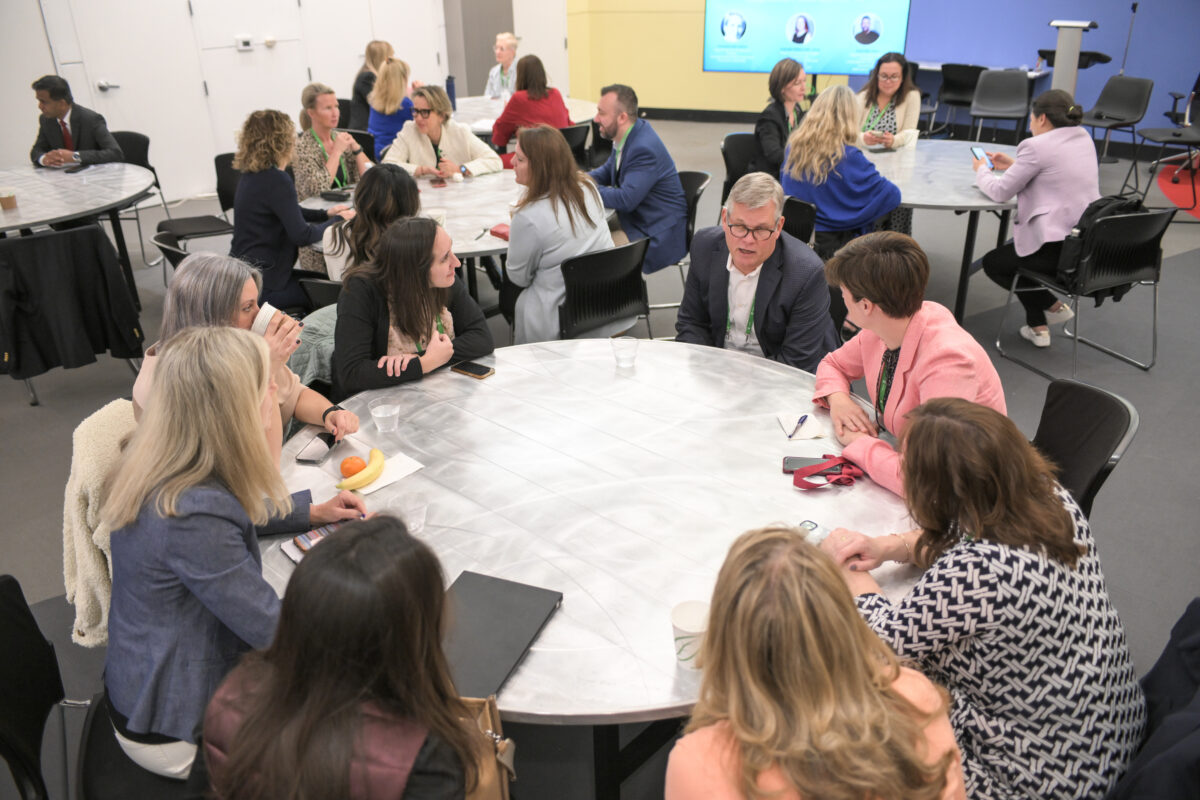Skift Take
With in-person events taking place right now across the United States and Europe, it's important to monitor the current opportunities and challenges facing event professionals. These nine stats are based on fresh data from our own survey and represent the most up-to-date industry data right now.
These are the key stats that represent a snapshot of the industry as we enter the fall event season and move closer to the fourth quarter. These are a selection of the preliminary results of our State of the Event Industry Research – Third Quarter 2021 as presented at the EventMB Experience Design Summit.
We have to date collected over 400 responses from event professionals across the globe. We have asked the same questions for three quarters and so we are able to compare with previous quarters and detect trends and patterns. Here is our analysis.
46 percent of respondents have hosted an in-person event in the last 6 months.
This is a clear sign that in-person events are back. This is a significant increase from 29 percent in the second and 24 percent in the first quarter of this year.
79 percent of respondents are currently planning in-person events.
Another positive sign for all event professionals involved with in-person events. Not all regions in the world are open for events currently so this is an excellent number and it follows on from an already promising 70 percent in the second quarter in contrast with a dismal 30 percent reported in the first quarter of 2021.
Most respondents are planning for smaller events than before the pandemic.
The percentage of respondents that are planning smaller events is up to 55 percent, from 51 percent in the second and 44 in the first quarter of 2021. This pretty much confirms the trends of shrinking events, at least for now.
Lack of quarantine requirements is now the top criteria for destination selection.
40 percent of respondents now consider a lack of quarantine requirements the most important criteria, up from 19 percent in the second quarter. In the second quarter, the top criteria was a widely accessible vaccine with 23 percent selecting it as the top criteria. This has now dropped to 8 percent. This shift suggests that the availability of vaccines is now a given, and event professionals are only waiting for destinations to make it feasible for participants to quickly travel in and out of a destination.
Major events are going ahead at a slightly lower rate than the previous quarter
When asked about the current plans for the next major in-person event, 40 percent of respondents stated it would go ahead. This is a small drop from when we asked the same question in the second quarter when 43 percent gave the same answer. This drop may be attributed to the recent increase in Covid infections and the Delta variant. This is still a world away from the first quarter when only 16 percent of respondents responded that their in-person events were going ahead.
Virtual events are increasingly more reliant on sponsorship as their primary source of revenue
Although there are other options, sponsorship continues to be the primary source of revenue for virtual events. 43 percent of respondents in this quarter is a steady increase from 34 percent in the second and 29 percent in the first quarter of this year.
Event professionals are struggling less with monetizing virtual events
The percentage of respondents who are unable to adequately monetized their virtual events has dropped to 21 percent, from 23 percent in the second quarter and 32 percent in the first quarter. This could be linked to a better understanding of sponsorship opportunities for virtual events and an overall maturing of the virtual event landscape. Regardless of the causes, this is a good trend for event professionals working with virtual events.
Engagement is increasingly the top challenge in planning virtual events
When it comes to the challenges around virtual events, engagement continues to dominate and it’s been further singled out with 36 percent of respondents selecting it as their top challenge. This is an increase from the second quarter result of 24 percent, which was lower than in the first quarter when 29 percent of respondents selected it as their top challenge.
Lack of tech knowledge in planning virtual events is much less of a challenge
It appears that event professionals have largely overcome their fear of technology. Only 8 percent chose lack of tech knowledge as their biggest challenge in planning virtual events. This is the lowest number so far with 9 percent selecting it in the second quarter and 13 percent in the first quarter. For this data point, we can reach even further into the final quarter of 2020 when 17 percent of respondents considered it their biggest challenge in planning virtual events. It’s safe to say, we’ve come a long way.





